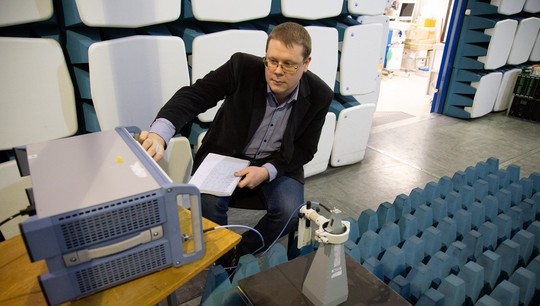Ural Federal University Experts Design Plastics That Resist Radiation from Technology
The team of scientists from the Institute of Technical Chemistry of the Ural Branch of the Russian Academy of Sciences (branch of the Perm Federal Research Centre of UB RAS) and the Ural Federal University created a composite polymer material. The new composite is made from recycled materials and has unique properties. It reflects electromagnetic waves. It is suitable for wireless systems, including radar and satellite communications systems. Such a composite (actually a plastic) can be used to make housings for devices such as smartphones. It will allow to reduce their electromagnetic radiation. The description of the new material is published in the journal Diamond and Related Materials.
“It is extremely important that we have been able to create a new composite material from virtually recycled raw materials. The basis of the material is chopped carbon fibers, which we extracted from carbon plastics. In addition, the composition of the composite includes magnetite (it is the magnetic nanoparticles) synthesized in our laboratory. Our work can increase the attractiveness of carbon plastics processing due to the use of secondary extracted carbon fibers in the expensive technologies,” says Svetlana Astafieva, the co-author of the development, the Head of the Laboratory of Structural-Chemical Modification of Polymers of the Institute of Technical Chemistry of UB RAS.
Studies have shown that by adding reduced carbon fibers with magnetite, plastic acquires new properties. It becomes reflective of electromagnetic waves. This is important because it helps reduce the radiation emitted by equipment.
The electrodynamic properties of the new material were tested in the UrFU. The purpose of the research was to study the frequency range of the composite and the behavior of the material in interaction with various electromagnetic waves.
“All the devices we use emit or receive different radio frequency signals in different ways. The new material is designed to create screens that interfere with radiation. Materials with such properties can find wide application in radioelectronics for various purposes. They can be used as non-conductive shields that isolate parts of circuit boards or casings of devices to protect them from outside interference. Nowadays there are metal analogues – shields. Our development will have a great advantage in terms of dimensional and operational properties, including better corrosion resistance,” explains Aleksey Korotkov, a Researcher at the Laboratory of Electromagnetic Capatibility at UrFU, co-author of the study.
The research group has already received the first samples of the new material and tested its electrodynamic properties. The next stage of the work is to study the thermophysical and physical-mechanical properties of the composite. It is necessary to estimate in which applications it will find the best application.
The research was carried out within the framework of the cooperation agreement signed in the summer of 2022 by Victor Koksharov, Rector of the Ural Federal University, and Vladimir Strelnikov, Director of the Institute of Chemical Technology of UB RAS.

